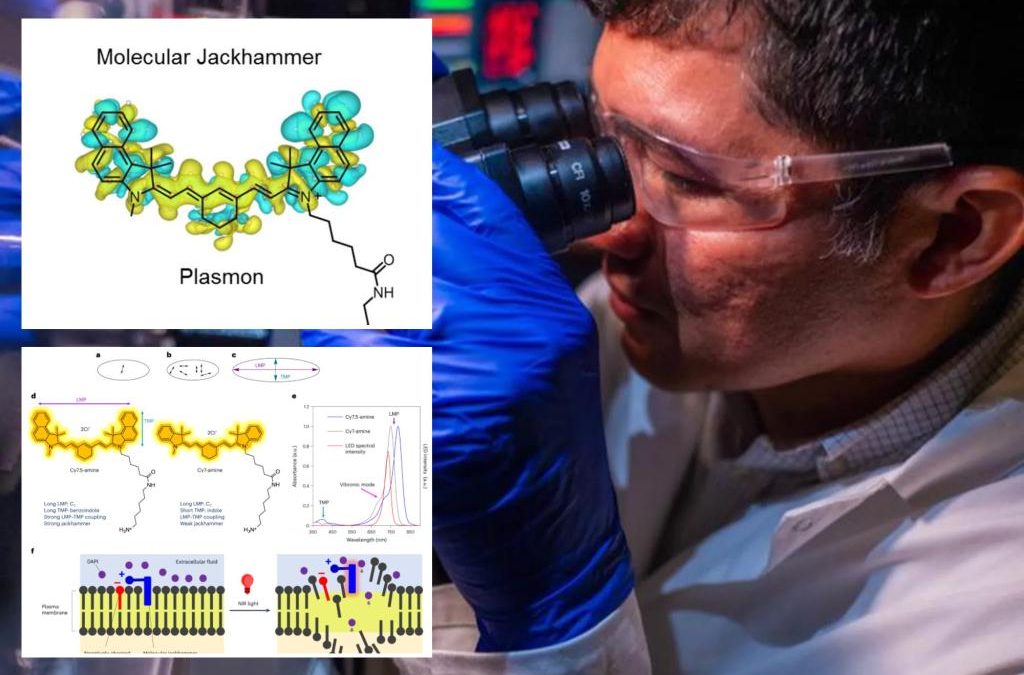An entirely new form of cancer treatment has been discovered that could possibly eradicate tumors and act as a possible alternative to chemotherapy.
Scientists at Rice University in Texas called the method a “new generation” of molecular machines, known as “molecular jackhammers” (MJH).
It occurs by using a cyanine dye, similar to those used in medical imaging, which is then attached to a cancer cell and stimulated using infrared light, which can penetrate deep into a human without damaging them.
This vibrates the cell, causing its membrane to tear open and destroy the cancer.
“Our technology could have lower side effects in contrast to chemotherapy,” said Ciceron Ayala Orozco, lead author on the study, who added it would be most effective against solid tumors.
“Since the molecules can be used at safe doses where the molecule alone is non toxic, the molecule only destroys the tumors where the near-infra-red light is directed to the tumor area. Therefore, the damage can be selective to the tumor area and keep the rest of the body safe.”
Human testing will not occur for many years yet, due to the need to follow Food and Drug Administration guidelines.
“At this point our results are a proof of concept that demonstrates that a tumor can be eliminated with this technology,” Mr. Ayala Orozco said.
“But this does not translate directly to the expected results in patients.”
While human testing is a long way off, initial results with mice have been very promising.
When they tested this new technology on test mice with melanoma, 50 percent of the rodents became cancer-free.
They believe that when their testing and dosage is optimized, they can produce even greater results.
Rice University chemist Dr James Tour said that MJHs have “more than enough energy to destroy any membrane of a cell”.
“It is very rare to see this aggressive cancer leave and ‘never’ return in the 7-month period,” he said. “And this was not optimized.”
When testing on the mice, they found their method had a 99 percent efficiency against human tumors grown on the mice’s flanks, and 100 percent on their dose-dependent/optimized studies.
“Inject the MJH, wait 30 minutes. Shine a light for 10 minutes,” Dr Tour said.
“How hard is that?”
Calling it nanomechanical therapy, Dr Tour said that the research adds “a new modality of treatment”.
“That’s a big deal to expand one’s arsenal like that,” he said.
Rice University scientists are now researching if the technology could be coupled with immunotherapy, hoping to use it to locate “the last vestiges of cancer” in a person’s body.
Source




